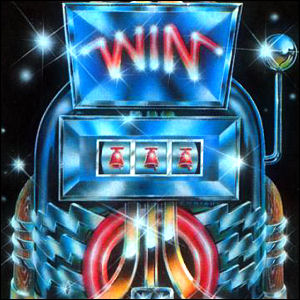 Atari releases the Slot Machine cartridge for the Atari VCS, designed and programmed by future Pitfall! programmer David Crane.
Atari releases the Slot Machine cartridge for the Atari VCS, designed and programmed by future Pitfall! programmer David Crane. ![]()

 Atari releases the Slot Machine cartridge for the Atari VCS, designed and programmed by future Pitfall! programmer David Crane.
Atari releases the Slot Machine cartridge for the Atari VCS, designed and programmed by future Pitfall! programmer David Crane. ![]()
 Having originally announced a programmable video game console in 1977 before almost cancelling the project, Magnavox launches its first cartridge-based video game console, the Odyssey². Though intended to compete with the Atari VCS, the Odyssey² is at a disadvantage thanks to its underpowered Intel processor and a limited graphics set.
Having originally announced a programmable video game console in 1977 before almost cancelling the project, Magnavox launches its first cartridge-based video game console, the Odyssey². Though intended to compete with the Atari VCS, the Odyssey² is at a disadvantage thanks to its underpowered Intel processor and a limited graphics set. ![]()
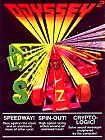 Magnavox releases the video game cartridge Speedway! / Spin-Out! / Crypto-Logic! for the Odyssey² video game system. This is the pack-in game included with every system.
Magnavox releases the video game cartridge Speedway! / Spin-Out! / Crypto-Logic! for the Odyssey² video game system. This is the pack-in game included with every system. ![]()
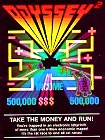 Magnavox releases the video game cartridge Take The Money And Run! for the Odyssey² video game system, designed and programmed by Ed and Linda Averett. This is a two-player maze game that predates Pac-Man.
Magnavox releases the video game cartridge Take The Money And Run! for the Odyssey² video game system, designed and programmed by Ed and Linda Averett. This is a two-player maze game that predates Pac-Man. ![]()
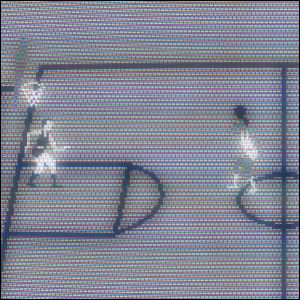 Atari releases the two-player arcade game Basketball, which features one of the earliest instances of a basketball court drawn in a vaguely 3-D perspective. Like its Football predecessor from Atari, Basketball uses dual trackball controllers.
Atari releases the two-player arcade game Basketball, which features one of the earliest instances of a basketball court drawn in a vaguely 3-D perspective. Like its Football predecessor from Atari, Basketball uses dual trackball controllers. ![]()
 Atari releases Superman as a cartridge for the Atari 2600. This is the first major synergy between Atari and fellow Warner Communications unit DC Comics, riding on the renewed interest in the character generated by the 1978 movie.
Atari releases Superman as a cartridge for the Atari 2600. This is the first major synergy between Atari and fellow Warner Communications unit DC Comics, riding on the renewed interest in the character generated by the 1978 movie. ![]()
![]()
 Cinematronics gives arcade players the chance to fall on their swords – or their opponent’s sword – in the first-ever head-to-head fighting video game, Warrior. Combining the company’s “Vectorbeam” vector graphics with a brilliantly colorful backdrop illuminated by blacklight, Warrior is a feast for the eyes and becomes an arcade cult classic.
Cinematronics gives arcade players the chance to fall on their swords – or their opponent’s sword – in the first-ever head-to-head fighting video game, Warrior. Combining the company’s “Vectorbeam” vector graphics with a brilliantly colorful backdrop illuminated by blacklight, Warrior is a feast for the eyes and becomes an arcade cult classic. ![]()
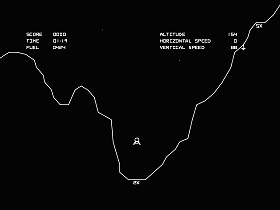 Some ten years after the real thing put men on the moon, Atari invites arcade space pilots to try their own luck at the controls of the Lunar Lander. A tricky, brainy game based on real physics, requiring players to cancel out unwanted motion in two axes without running out of fuel, the results are perhaps a little too real: quite a few vector-graphic Eagles fail to land in one piece, and quite a few disgruntled pilots don’t come back to try again.
Some ten years after the real thing put men on the moon, Atari invites arcade space pilots to try their own luck at the controls of the Lunar Lander. A tricky, brainy game based on real physics, requiring players to cancel out unwanted motion in two axes without running out of fuel, the results are perhaps a little too real: quite a few vector-graphic Eagles fail to land in one piece, and quite a few disgruntled pilots don’t come back to try again. ![]()
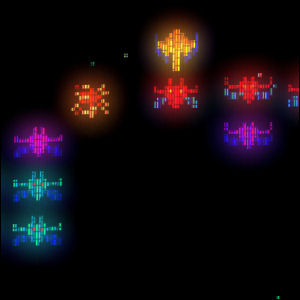 Arcade game maker Midway introduces the coin-op video game Galaxian in American arcades. The game, originated in Japan by Namco, is the first entry in a fruitful relationship between the two companies; another game in the works at Namco will prove to be huge windfall for Midway in 1980.
Arcade game maker Midway introduces the coin-op video game Galaxian in American arcades. The game, originated in Japan by Namco, is the first entry in a fruitful relationship between the two companies; another game in the works at Namco will prove to be huge windfall for Midway in 1980. ![]()
 Magnavox releases the video game cartridge War Of Nerves for the Odyssey² video game system, designed and programmed by Ed and Linda Averett. With an emphasis on giving orders to a robot army not directly under the player’s micro-managed control, this may be the earliest example of a real-time strategy video game.
Magnavox releases the video game cartridge War Of Nerves for the Odyssey² video game system, designed and programmed by Ed and Linda Averett. With an emphasis on giving orders to a robot army not directly under the player’s micro-managed control, this may be the earliest example of a real-time strategy video game. ![]()
 Atari releases the vector graphics arcade game Asteroids, a space game with as much Newtonian physics as can be simulated in a tiny amount of code. As one of Atari’s biggest hits to date, with over 50,000 cabinets produced, a sequel and home console ports are inevitable.
Atari releases the vector graphics arcade game Asteroids, a space game with as much Newtonian physics as can be simulated in a tiny amount of code. As one of Atari’s biggest hits to date, with over 50,000 cabinets produced, a sequel and home console ports are inevitable. ![]()
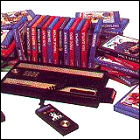 After over a year of play testing and preparation, Mattel Electronics launches the first major competitor to the market-dominating Atari VCS video game console: Intellivision (short for “Intelligent Television”). Boasting superior graphics and a library of the first-ever licensed sports titles (though licensed by various pro sports leagues, rather than by specific teams or individuals), Intellivision is well-poised to enter a market where sports games are all-important.
After over a year of play testing and preparation, Mattel Electronics launches the first major competitor to the market-dominating Atari VCS video game console: Intellivision (short for “Intelligent Television”). Boasting superior graphics and a library of the first-ever licensed sports titles (though licensed by various pro sports leagues, rather than by specific teams or individuals), Intellivision is well-poised to enter a market where sports games are all-important. ![]()
 Mattel Electronics releases the Major League Baseball cartridge for the Intellivision home video game system.
Mattel Electronics releases the Major League Baseball cartridge for the Intellivision home video game system. ![]()